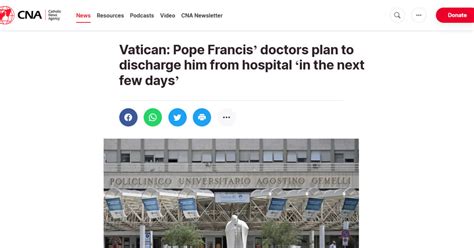Vatican on Pope Francis: Still Critical – A Recipe for Understanding
The ongoing discourse surrounding Pope Francis and his papacy is a complex and multifaceted issue. Analyzing the criticisms leveled against him requires a nuanced approach, acknowledging both the validity of certain concerns and the potential for misinterpretations. This "recipe" aims to provide a balanced understanding of the situation, using readily available information and diverse perspectives.
Ingredients: Understanding the Criticisms
1. Financial Management: Concerns about the Vatican's financial transparency and management practices have persisted throughout Pope Francis' papacy. Critics point to allegations of mismanagement and financial irregularities, demanding greater accountability and reform within the Vatican's administrative structures. Keyword: Vatican finances
2. Handling of Abuse Cases: The Catholic Church's handling of sexual abuse allegations continues to be a major source of criticism, extending to Pope Francis' tenure. Critics question the Church's responsiveness and the effectiveness of its measures to address the issue, calling for more decisive action and accountability. Keyword: Catholic Church abuse scandal
3. Doctrinal Clarity: Some critics argue that Pope Francis' pronouncements and actions on certain doctrinal issues lack clarity or contradict established Church teachings. Differing interpretations of his statements have fueled debates among theologians and conservative Catholics, leading to concerns about potential shifts in Catholic doctrine. Keyword: Catholic doctrine
4. Political Positions: Pope Francis' outspoken stance on social and political issues, such as poverty, inequality, and climate change, has drawn both praise and criticism. While some admire his commitment to social justice, others criticize his interventions in political affairs as exceeding the Church's traditional role. Keyword: Pope Francis political views
Method: Analyzing the Perspectives
Step 1: Consider the Source: It is crucial to evaluate the credibility and potential biases of sources when analyzing criticisms of Pope Francis. Understanding the motivations and perspectives of those voicing criticisms is essential for a balanced assessment.
Step 2: Examine the Evidence: Claims and criticisms should be examined against available evidence and corroborated through multiple sources. Relying on unsubstantiated allegations or biased reporting can lead to an inaccurate understanding of the situation.
Step 3: Explore the Context: The historical and contextual factors surrounding the criticisms are vital to understanding their significance. Considering the evolution of the Catholic Church and its ongoing challenges provides valuable perspective.
Serving the Dish: A Balanced Understanding
The criticisms against Pope Francis are not monolithic. They stem from diverse sources and encompass various aspects of his papacy. Understanding these criticisms requires a careful and nuanced approach, integrating multiple perspectives and avoiding generalizations. The "recipe" above provides a framework for analyzing these criticisms in a fair and informed manner, contributing to a more informed discussion on the complex issues surrounding the Pope's leadership.
Keywords: Pope Francis criticism, Vatican City, Catholic Church reform, Papal authority
This article attempts to present a balanced overview. It is important to consult multiple sources and engage in critical thinking to form your own informed opinion. The goal is to promote informed discussion and avoid perpetuating misinformation.
